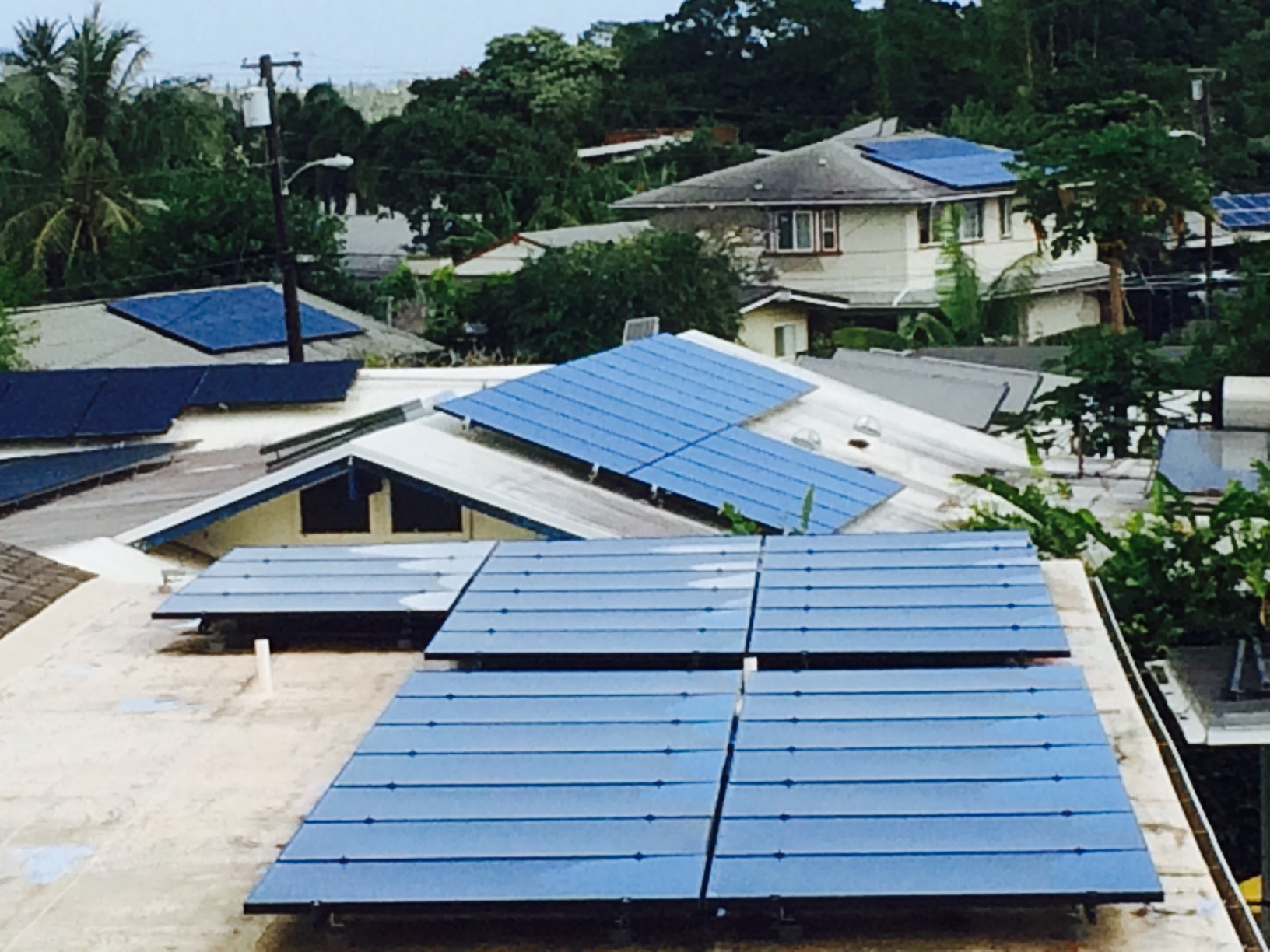The roll-out of the Green Energy Market Securitization program (GEMS) has had results that can charitably be described as disappointing. Of the $145 million available for loans intended to help Hawai`i homeowners and renters avail themselves of advances in energy-saving technologies, just three loans had been approved by the end of last January.
Officers with three solar installers who were willing to talk with Environment Hawai`i discussed some of the reasons they felt were behind the program’s limited results. None was willing to be identified in print.
“There was a difficulty not only in getting customers approved, but in dealing with the program in general,” one company officer told Environment Hawai`i. “It was time consuming. Weeks would go by with no response, customers would be calling, saying they’d never been contacted.”
One thing in particular he found upsetting: “A lot of homeowners are putting their homes in trust to qualify for Medicaid. They’re being turned down by the GEMS program, because the property is in a trust. We had quite a few customers who had to put their homes under a trust for medical purposes. They wanted to apply for the program but got rejected.” Even though the lack of fee ownership of property was cited in these cases, he went on to say, GEMS did entertain loan applications from Hawaiian Homes lessees.
Another executive with a solar company said the very process of getting authorization to work with GEMS was a hurdle. “It was a difficult process to become authorized,” he said, blaming that in part on a “lack of leadership.”
The program “got off to an extraordinarily slow start. … We still think that conceptually it makes sense, as something that could benefit portions of the consumer market that might not otherwise have funding for solar energy. It’s a good theory. It’s just a matter of making it work in the real world.”
When the Public Utilities Commission closed the door on net-energy metering last fall, “that had an enormous damper effect on the entire solar market.” Both of the customers of this installer who had been approved had applied before the PUC decision to end NEM. Since then, he has received no GEMS applications.
He mentioned yet another disadvantage for solar installers under GEMS: “we had to front all costs before we could get paid,” he said. Not until a system was up and running are solar installers able to recover their costs under GEMS.
A representative of yet a third solar contractor who spoke with Environment Hawai`i said that he had been an enthusiastic proponent of the bill when it made its way through the Legislature in 2013. After passage, however, when the Department of Business, Economic Development, and Tourism was working out details of GEMS, “it felt, at times, like there were 100 cooks in the kitchen.”
“The most frustrating thing,” he said, “was that GEMS was supposed to help create on-bill financing. That hasn’t happened.”
His company “initially looked into working with GEMS,” but decided against it in the end, judging the process to be “too complicated. … If the solar energy industry has a certain process, you have to find out how it works and adjust to that. You can’t just do it how you want things to happen.”
— Patricia Tummons


Leave a Reply